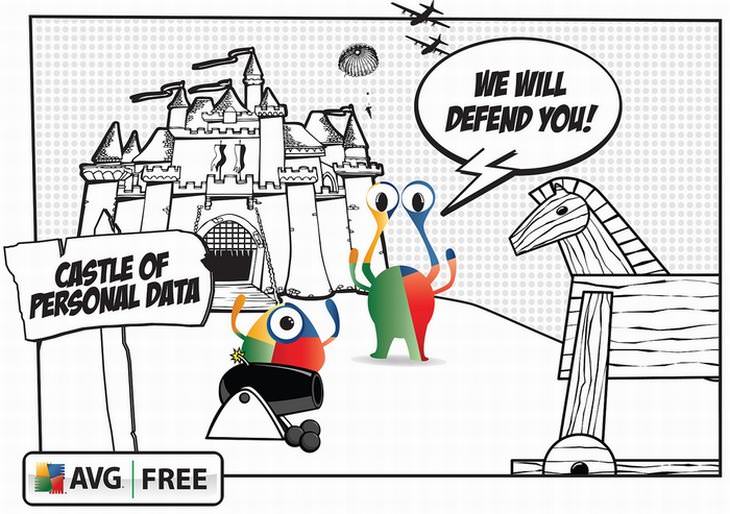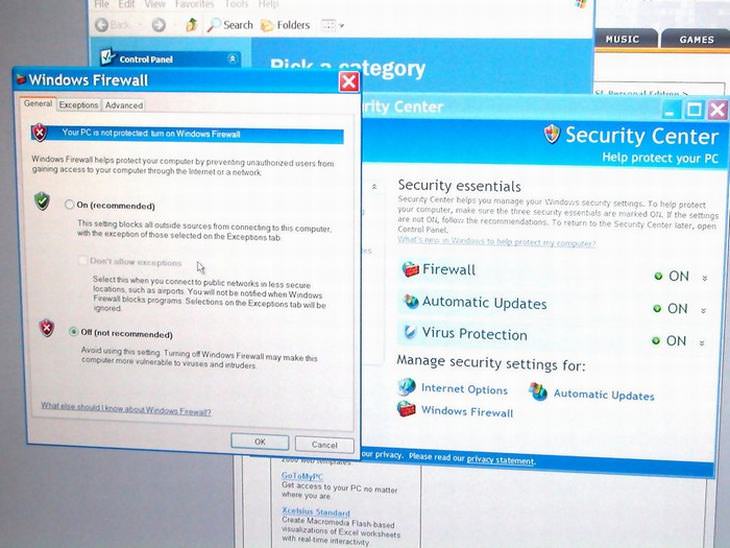1. Make Sure Your Firewall is Turned On
A firewall is a piece of software that protects your computer from hackers that might try to steal your sensitive information, such as personal details or passwords. Luckily, computers with Windows or Mac operating systems both have built-in firewalls that work well.
If you have a Windows computer, take the following steps to make sure your firewall is on:
1. Click the Start button
2. Click Control Panel
3. In the left pane of your Control Panel screen, you’ll see an option to turn Windows Firewall on or off. Make sure it’s set to On.
4. Click OK
If you have a Mac computer, take the following steps to make sure your firewall is on:
1. Click the Apple menu
2. Click System Preferences
3. Click on the Security & Privacy icon
4. Click on the Firewall tab
5. Click on the lock icon
6. Enter your Apple ID (password)
7. Click Firewall Options
8. Select the applications you want to allow incoming connections for
9. Click OK
2. Update Your Operating System
The maker of your computer’s operating system, most likely Microsoft or Apple, is constantly updating its software to make it more secure. While Windows (Microsoft) has an 'Automatic Updates' function that you just have to enable and never worry about again, MacOS (Apple) allows you to update your software in just a couple of clicks.
To turn on Automatic Updates on your Windows computer, take the following steps:
1. Click the Start button
2. Type “Update” in the search box
3. Click Windows Update when it appears in the list of results
4. Under Important Updates, selected Install Updates Automatically
5. Under Recommended Updates, tick the “Give me recommended updates the same way I receive important updates” checkbox
6. Click OK
To update your operating system and any other software that needs updating on your MacOS computer, take the following steps:
1. Click on the App Store app
2. Click on Updates in App Store’s top toolbar
3. Click Update All to update any software that needs updating
3. Install Antivirus Software

In this day and age, having good antivirus software installed is a must for securing your computer. Antivirus software protects your computer from threats to its system, such as unauthorized code or software. This is more applicable to Windows computers than MacOS computers, mainly because the vast majority of nefarious programs designed to steal information and viruses are targeted at the Windows operating system.
In fact, it is almost unheard of for a private MacOS computer to fall victim to malware or a virus. While the reason for this is unclear, it is believed to be because there are many more Windows computer users on a global level than Mac users. If you don’t already have antivirus software installed on your computer, PC Magazine’s current editorial picks are AVG and Panda. All you have to do is click on the links I’ve provided you with, and follow the instructions to install either of these great programs!
4. Use Complex Passwords
This one seems pretty obvious, but many people tend to overlook it or ignore it.
I recommend that you:
• Use a different password for each account that you use on your computer (website, email account, program, etc.) and keep a record of all your passwords somewhere secure (and separate from your computer).
• Use a combination of lowercase and uppercase letters, numbers and special characters in each password to make it exponentially more difficult to crack.
• Make sure that each password is at least eight characters long.
5. Keep All Your Software Updated
Just as I mentioned keeping your operating system up to date previously, it’s important to keep all the software you have installed on your computer updated as this reduces the risk of an internet-based attack.
6. Install a Spam Blocker or Email Filter
This kind of software is designed to ensure that you only receive emails that are legitimate, relevant and harmless by filtering out spam emails that may be scams or designed to steal your details. Two of the best free programs you can use to secure your email accounts are Cactus Spam Filter and Spamihilator. All you have to do is click either of the links provided and follow the instructions on the screen to install.
7. Be Wary of What You Open or Download
Although installing a spam blocker or email filter will help to filter out the vast majority of malicious or spam emails sent to your email account, you still need to cautious in regards to what you open or download. If an email looks suspicious or you have no idea of its origin, just delete it, rather than opening it. If you’re surfing the internet and have been asked to download something you have no knowledge of and/or looks suspicious, don’t download it - only download from sources you know to be legitimate.
8. Install Anti-Spyware Software
Spyware is just as shady as it sounds – it’s software that’s designed to allow hackers to spy on your activities while you’re on your computer and collect information about you without your consent. Your operating system will have some spyware protection built-in, as may any antivirus software you have installed. AVG, as mentioned earlier, has anti-spyware software built right in.
Should you wish to go for standalone anti-spyware software, Malwarebytes’s free program will do the trick. Select the free version by clicking the black Download button after you click the link provided.
9. Turn off Your Computer When You’re Done
While it might be easier to just leave your computer on when you’re not using it, doing so leaves it susceptible to attacks from the internet.
Turning your computer off effectively severs any connection an attacker may have made through malicious software.





